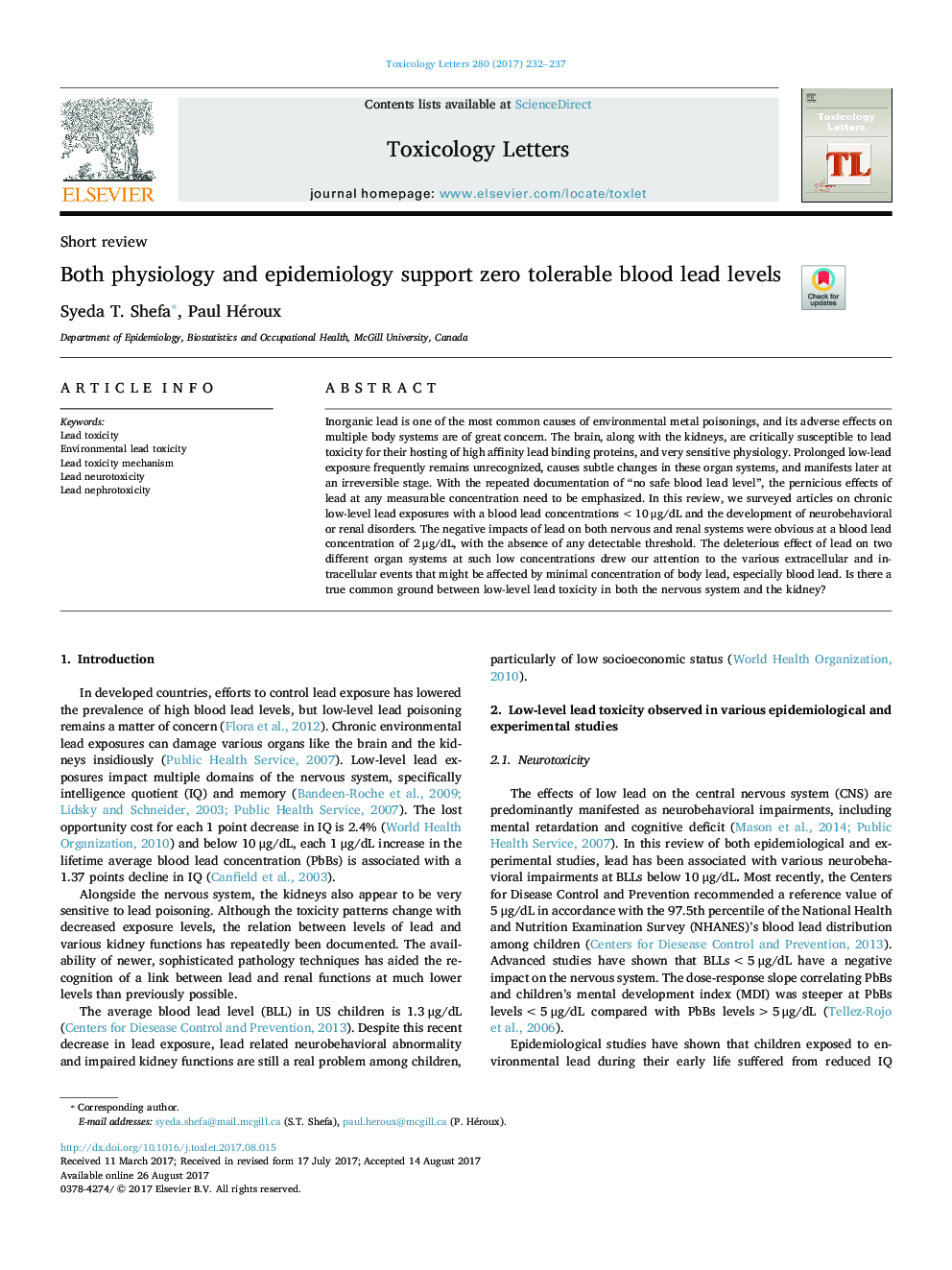| کد مقاله | کد نشریه | سال انتشار | مقاله انگلیسی | نسخه تمام متن |
|---|---|---|---|---|
| 5562041 | 1562592 | 2017 | 6 صفحه PDF | دانلود رایگان |
عنوان انگلیسی مقاله ISI
Both physiology and epidemiology support zero tolerable blood lead levels
ترجمه فارسی عنوان
هر دو فیزیولوژی و اپیدمیولوژی از صفر قابل تحمل سرب خون پشتیبانی می کند
دانلود مقاله + سفارش ترجمه
دانلود مقاله ISI انگلیسی
رایگان برای ایرانیان
کلمات کلیدی
سمیت سرب، سمی بودن سرب محیط زیست، مکانیسم سمیت سرب، عصاره سرب سرب، سرطان سمی،
موضوعات مرتبط
علوم زیستی و بیوفناوری
علوم محیط زیست
بهداشت، سم شناسی و جهش زایی
چکیده انگلیسی
Inorganic lead is one of the most common causes of environmental metal poisonings, and its adverse effects on multiple body systems are of great concern. The brain, along with the kidneys, are critically susceptible to lead toxicity for their hosting of high affinity lead binding proteins, and very sensitive physiology. Prolonged low-lead exposure frequently remains unrecognized, causes subtle changes in these organ systems, and manifests later at an irreversible stage. With the repeated documentation of “no safe blood lead level”, the pernicious effects of lead at any measurable concentration need to be emphasized. In this review, we surveyed articles on chronic low-level lead exposures with a blood lead concentrations <10 μg/dL and the development of neurobehavioral or renal disorders. The negative impacts of lead on both nervous and renal systems were obvious at a blood lead concentration of 2 μg/dL, with the absence of any detectable threshold. The deleterious effect of lead on two different organ systems at such low concentrations drew our attention to the various extracellular and intracellular events that might be affected by minimal concentration of body lead, especially blood lead. Is there a true common ground between low-level lead toxicity in both the nervous system and the kidney?
ناشر
Database: Elsevier - ScienceDirect (ساینس دایرکت)
Journal: Toxicology Letters - Volume 280, 5 October 2017, Pages 232-237
Journal: Toxicology Letters - Volume 280, 5 October 2017, Pages 232-237
نویسندگان
Syeda T. Shefa, Paul Héroux,
